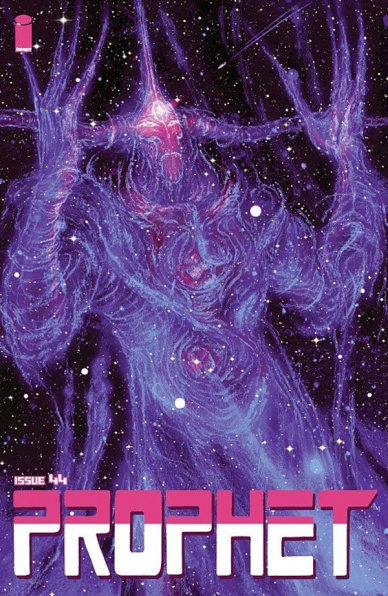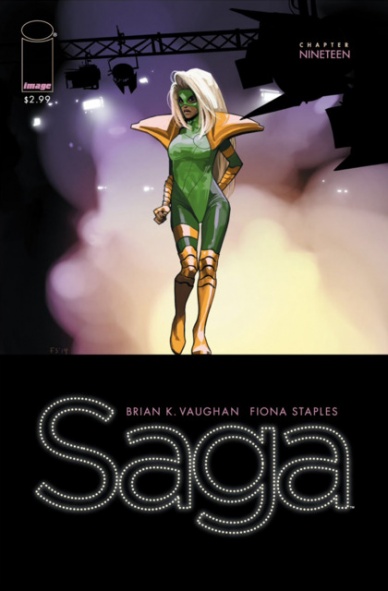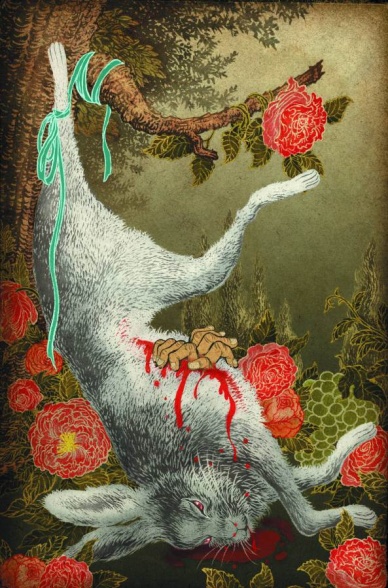There is a lot to cover on Wednesdays. We should know, as collectively, we read an insane amount of comics. Even with a large review staff, it’s hard to get to everything. With that in mind, we’re back with Wrapping Wednesday, where we look at some of the books we missed in what was another great week of comics.
Let’s get this party started.

Amazing Spider-Man #2
Written by Dan Slott
Illustrated by Humberto Ramos
Reviewed by James Johnston
After the last premiere issue which, while enjoyable, was still more of a game of catch-up, “Amazing Spider-Man” #2 delivers on the plot a lot more than last time, with more development in Peter Parker’s tumultuous personal life, hints at what’s to come, and a pretty creepy revitalization of Electro. For reals, even though Humberto Ramos’s art has this great cartoony vibe that gives “Amazing Spider-Man” it’s energy, he can really pull some messed up scenes. Really, if it wasn’t for Hannibal this issue might have had the most messed up scene where someone was disfigured in the shadows this week. Sorry Ramos, it was such a specific category too! Aside from Parker’s highflying and Electro coping with his powers, there’s a lot of development to be seen in this issue of “ASM”. Anna Maria’s becoming the breakout star of the series and Doc Ock’s tentacles definitely haven’t given up their last grasp on Parker’s life, and if the final actions of this issue are indicated, his psyche. Good times are head of us, Spidey Fans. Good times.
Final Verdict: 7.7 – Buy!

Batman/Superman #11
Written by Greg Pak
Illustrated by Karl Kerschl, Daniel Sampere, and Tom Derenick
Reviewed by Zach Wilkerson
At this point, “Batman/Superman” is the comic book equivalent to a box of chocolates. While some may find the book’s flippant disregard for solicitations frustrating, it’s a little refreshing to have book that you can pick up and literally have no idea what to expect. With Jae Lee still working on the follow up to “First Contact,” Greg Pak and an army of artists take a detour with an unexpected chapter of “Superman: Doomed.” While it may have seem a last minute decision, “Batman/Superman” provides a terrific level of synergy with other books in the crossover. It not only incorporates concepts from Pak’s “Action Comics” chapters, such as the enigmatic Ghost Soldier, but puts a distinct focus on Batman, in contrast to the Wonder Woman-centric “Superman/Wonder Woman.” This chapter sees Batman, Wonder Woman, Krypto and Steel following Doomsday’s trail back to the Phantom Zone. This in turn leads to Pak touching on several threads from not only his work on “Action Comics,” but Grant Morrison’s as well. Just as the story feels like a conglomeration of disparate pieces that make a greater whole, the contributions of the book’s three artists come together to make an issue that, while not perfect, feels relatively solid. “Batman/Superman” #11 is an absolute must buy if you’re following the “Doomed” storyline, but it also has plenty to offer for any fan of Pak’s Superman work.
Final Verdict: 7.5 – Browse (Buy for “Doomed”)

Brain Boy: The Men From G.E.S.T.A.L.T. #1
Written by Fred Van Lente
Illustrated by Freddie Williams II
Reviewed by Brian Salvatore
After a successful miniseries, illustrated by the great R.B. Silva, Matt Price is back for a second spin. The opening issue is very reflective of the title of the series, which is clearly an homage to The Man From U.N.C.L.E.; the first sequence feels especially like the start of a big budget action film, with lots of frenetic action and chaos ensuing in the White House.
For this mini, writer Fred Van Lente is joined by Freddie Williams II, and his style simply doesn’t fit the property as well as Silva’s did. His characters appear lumpy and inconsistent, and for a script that so clearly wants to be sleek and spy-like, his work is just too cluttered and sloppy to really work. Add this to the fact that attacking the White House is a trope greatly overused today, and this leaves the first half of the issue in a compromised state.
Continued belowLuckily, the back half makes up the difference a little bit in character development, allowing the audience to catch up with Price and his mission a little bit. That said, aside from the ending sequence on the airplane, everything else feels like a placeholder if you’ve read the first mini. This issue has an unenviable task of being open to new readers and satisfying to old ones, but that isn’t an excuse – most comics have that same challenge. Instead, this just falls short in just about every way; there is hope for the mini, but it needs to pick up the action and, especially, get Williams doing better work.
Plus, for some reason I really dislike when the actual President and First Lady are used in comics, especially when referred to by their actual names. I don’t know why that bugs me.
Final Verdict: 5.2 – Browse

Flash Gordon #2
Written by Jeff Parker
Illustrated by Evan “Doc” Shaner
Reviewed by Brian Salvatore
This comic is an incredibly effective throwback to the swashbuckling adventure stories of old. Flash, Doc and Dale’s opening scene at the feast is reminiscent of the banquet from Indiana Jones and the Temple of Doom, and the pulp feel doesn’t end there. Parker and Shaner, taken together, produce a comic that feels timeless and draws the reader in with every panel. Shaner’s Gordon is handsome and curious, always with one eye on adventure around each corner. Parker clearly has a love for the character, as the book just radiates joy and fun.
The gang is impersonating a research team from Mongo, but the Arborians are suspicious of them from the start. Throughout the issue, Shaner does a great job of showing their struggle between hospitality and disbelief, allowing the scenes to have some tension, but not appear dire. There is a nice mixture of science and bullshit in what Doc is telling the people, and Dale is quick enough on her feet to help them get through a day of their visit in one piece.
This issue really shows the potential for the book – zany adventures, smartly written and brilliantly drawn, inhabiting infinite worlds. This is one of the more exciting books to be released this month and, perhaps, this year.
Final Verdict: 8.8 – Buy

Justice League of America #14
Written by Matt Kindt
Illustrated by Tom Derenick, Eddy Barrows, and Diogene Neves
Reviewed by Brian Salvatore
There is almost no fair way to accurately review this issue, which was delayed nearly two months, in order to not spoil the end of “Forever Evil.” However, because of that delay, the series that spins out of this, “Justice League United,” is already two issues in, rendering this more or less moot.
The plot is more or less just an exposition dump, placing the characters where they need to be for the next few months of their adventures. Matt Kindt does about as able of a job as anyone could writing this sort of issue but, especially in its two month delay, the issue just seems more or less useless. Add to that the fact that it took three artists combined to finish the issue, of which a lot of the action is two people sitting at a table, and the book seems even more inconsequential. Again, there is nothing really wrong with the art or the dialogue, but to earn a buy, especially at $3.99, it needs to do significantly more than this; namely, anything.
Final Verdict: 5.0 – Browse

Prophet #44
Written by Brandon Graham
Illustrated by Dave Taylor
Reviewed by Matthew Meylikhov

Review officially sanctioned by Joe Keatinge.
Final Verdict: A billion stars exploding within the compact inspace of our minds

Saga #19
Written by Brian K. Vaughan
Illustrated by Fiona Staples
Reviewed by Zach Wilkerson
There’s a point after every break in “Saga” where I pick up the first issue to a new arc and think, “after not reading this book for a few months, do I still really care?” After just a few seconds with “Saga” #19, that answer was a clear and resounding “YES.” Vaughan quickly eases the reader back into the swing of things with a wonderfully composed narration from Hazel. Fiona Staples welcomes the reader back in a different way, with what is easily the most outrageous opening page she’s delivered to date. Over the course of the issue, Vaughan and Staples reacquaint the reader with Alana and Marko, whose lives have progressed in seemingly real time over the break. More than ever, “Saga” feels like a slice of life drama with sci-fi trappings. The conflicts feel more in line with an episode of Parenthood than with Star Wars. There’s a sense of tension, a sense that not all is well, that something is bubbling just below the surface. Vaughan lays in thinly veiled references to broken marriages and infidelity. In an instant, young Hazel conquers all fear and doubt with her adorable exuberance. Then, in total Vaughan style, older Hazel back hands the reader with a final page that will likely be the death of Tumblr.
Continued below“Saga,” you’ve got me once more. It’s good to have you back.
Final Verdict: 9.3 – Buy.

Sinestro #2
Written by Cullen Bunn
Illustrated by Dale Eaglesham
Reviewed by Brian Salvatore
Over the past decade, few characters have been as rehabilitated as Sinestro, who has become one of the more popular and well-used villains in all of comics. This series, his first ongoing, is continuing to grow his character in the (relatively) expected ways: this issue uses his connection to Korugar to help put his actions into context, but doesn’t shy away from his villainous traits, either. Cullen Bunn does a really nice job at making Sinestro’s character relatable, but still reviled.
Introducing Soranik Natu into the book is also a welcome addition, as she isn’t being utilized in the Green Lantern books, and her relationship with Sinestro has never been fully explored. Giving Sinestro a foil to play off of that isn’t a strict adversary or underling is smart writing on Bunn’s part.
Eaglesham, who also drew Sinestro’s “Villains Month” entry last year, really has a handle on the character and the world he inhabits. The constructs, always the way to test a Lantern artist, are refined and with purpose when created by Sinestro, and less well put together and thought out by the lesser Sinestro Corps members. The issue doesn’t quite have the bombast, artistically, of the debut, but that isn’t Eagleshame’s fault – his work is as well done as is expected from his reputation.
Final Verdict: 7.9 – Buy

Solar: Man of the Atom #2
Written by Frank Barbiere
Illustrated by Joe Bennett
Reviewed by Brian Salvatore
“Solar” had thrown down the gauntlet with the first issue of the seires being, essentially, an epilogue to a character we didn’t really know or care about. This issue, instead, acts as a proper introduction to Erica, the would be Woman of the Atom, and shows how Barbiere and Bennett are taking the book from an unexpected angle.
Bennett’s work in this issue is really exceptional, as he has the task of blending memory, hallucination, and reality into a story that still flows and is understandable. The dual stories of Colin and Erica are presented well, and both characters are still shrouded in something of mystery. Colin, in particular, is a bit of a conundrum, as he is consistently trying to put people at ease around him, but wields a personality that appears to be hiding something.
We feel far more sympathy for Erica, who has been thrown into a situation is much more unusual and dangerous than Colin’s. Barbiere really shines in how he uses Erica’s memories, along with her desires, to show us her backstory and help us see the type of hero she is destined to become. We also see what her father’s role will be as the series progresses. This issue, to a degree, lays out the mission statement of the series without being clunky about it, and gives plenty of reason to continue on with the series.
Final Verdict: 8.0 – Buy

Unwritten Apocalpyse #5
Written by Mike Carey and Peter Gross
Illustrated by Peter Gross and Al Davison
Cover by Yuko Shimizu
Review by Walt Richardson
First of all, can we take a moment to appreciate Yuko Shimizu’s cover work? Sure, we (David and I, at least) have talked quite a bit about her work over the years, but this cover is one of my favorites so far. The slightly-below-center focus of the hands, the weight that the body gives to the composition, the negative space surrounding the topmost flower, and the highly contrasting teal of the ribbon are only some of the factors of what makes this work so striking (and that about exhausts my limited vocabulary when it comes to talking about art). While there are many reasons the impending end of “Unwritten” is bittersweet, no longer getting a Shimizu cover every month is near the top of the list.
Continued belowThe interiors are quite striking as well. Half of the line work is solely by Peter Gross while the other half is Al Davison’s finishes over Gross’s layouts (at least, that’s how I understand it), as in #24, “Stairway to Heaven.” Davison emphasizes the bleakness of this world, and the sharp contrast it is from the safe haven of Willow Bank. Gross, on the other hand, is as fluid and clear as ever, with layouts that are creative yet subtle. The true artistic star, however, is colorist Chris Chuckry, who has become this book’s secret weapon. Chuckry has been good since issue #1, but when you look at that issue when placed next to this one the development is very noticeable (you’d hope so after five years, but even so). I look forward to seeing what he moves onto next — hopefully something with Carey, Gross, and Shimizu again.
The Mr. Bun issues have all been well written, so it is probably no surprise that this is the best issue since “The Unwritten Fables” started. The post-Leviathan world is a bleak, bleak place, enough to make even a hard man-rabbit like Pauly Bruckner yearn for a happier, simpler place. But in a time where comics often use bleakness as an easy way to seem deep, Carey and Gross remind us that there is only one reason to make any creative choice: because it makes for a good story. Add in Pauly giving Wilson the attitude we wish Tom would give him and one hell of a cliffhanger, and Carey and Gross have reminded us why everyone was raving about this series a year or two back.
Final Verdict: 8.8 – Buy it!






